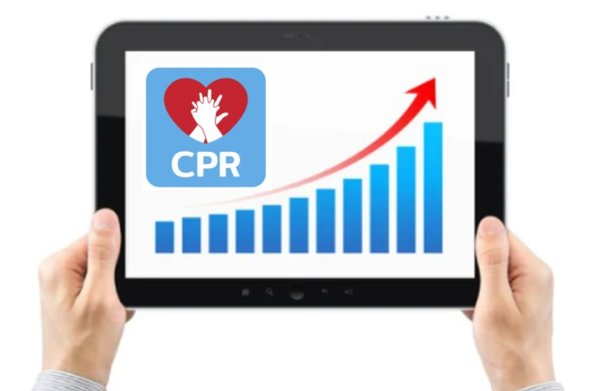Many niche publishers are assessing their print magazines as media budgets and ad dollars shrink this year. But you may be missing out on revenue opportunities by cutting issues or closing up entirely. Read on for five evaluation tactics from Erin Peterson, owner at Capstone Communications. This article was first published in Pages magazine, published by Lane Press. – Editors
*****
As organizations look to slash budgets in this difficult time, one line item in many communications offices is getting particular scrutiny: the print magazine.
It’s no secret why. The costs of printing and mailing can add up quickly. And unlike gauging social media by clicks and likes and shares, measuring the effectiveness of print magazines can be tough. As our screen time skyrockets, it may seem wise just to meet people where they are.
But the reality may be more complex — and ripe with opportunity. Before making cuts to your print magazine, you might ask: Have you done the work to maximize its potential?
If your print magazine is on thin ice, or if you just want to make sure you’re squeezing the most value out of every page, consider these tactics. They’ll amp up your publication’s value to your readers — and your organization.
1. Make the most of your “push communication.”
Magazines that arrive in readers’ mailboxes are “push communications” — you are in control of who receives your publication and when they receive it.
That’s a big and often underestimated benefit: Your audience will have to interact with it, even if only to scan the front and back covers on the way to the recycling bin. Many will spend a few minutes flipping through the pages looking for a headline or photo that catches their eye. Connect with the right story, and they’ll read a few articles or save it on the coffee table for later.
Your website and digital publications, by contrast, are “pull communications.” They’re available on your readers’ terms, which means you don’t have the same control over who sees them and when (or if they see them at all). Will they read that email you sent, or will it get funneled to spam? Is the algorithm squashing that perfectly worded Facebook post? Will it occur to your audience spontaneously to visit your website?
When your readers need to take action in order to access this content (open an email, visit a website, happen upon your social media posts), it’s incumbent on you to do more work to raise its visibility: advertisements, SEO, interviews, and more.
Pull communications require teams to spend much more of their time marketing and promoting the content they’ve produced. Push communications, like a mailed print magazine, allow teams to spend their time focusing primarily on producing content their audience loves.
Moving from a print magazine to a digital one is more than just a change of medium. It changes who will see your publication and even how they read it. If someone tweets a link to your story, there’s just a 40 percent chance that they’ve actually read beyond the headline, according to a study by Columbia University. And if they click through to the story? Chartbeat data suggests that only a quarter of readers will make it to the end. By contrast, qualitative responses from a University of Alabama study suggest readers stick to print. “I’ll actually read the articles in the hard copy,” says one respondent. “I just skim online.” In the end, moving from print to digital — from push to pull — will help you cut costs. But at what price?
2. Use your second-most valuable page strategically.
In the consumer magazine world, ad rates tell a story about the value of each page of your publication. Your front cover is your most valuable real estate, and the back cover comes in a close second.
Most of us know to treat front covers with the attention they deserve. But if you’re not selling ads on your back cover (like many alumni and association magazines), you may be giving the content that does appear on that page short-shrift.
I’ve seen countless alumni magazines, for example, dedicate the page to a captionless campus photo. I’ve seen association magazines literally run nothing on the back — just a solid color with nothing on it.
You can do better.
Certainly, that page can be used as a way to promote content that appears in the issue.
But you can also do more than that: I’ve seen colleges ask nostalgia-based questions on that page (“Tell us about your favorite campus concert” or “Share a story about your favorite professor.”) Readers love it and happily share their memories.
The benefits of such a technique are myriad: Respondents are reminded of the many reasons they appreciate their institution. Magazines, meanwhile, get crowdsourced content that can be edited and run as a packaged feature or department. (One alumni magazine heard from so many readers for one of its questions that it devoted nearly 10 pages to the responses.)
If that’s not appropriate for your readers, you might decide to share a few simple statistics or key messages. I’ve seen community colleges tout graduation rates, employment statistics, and awards on its back page. Even if all the reader does is glance at the issue, they’ll see a small handful of strategic messages that are important for your organization.
Next Week: Tactics #3-#5 for your print magazine!
*******
More about Erin: Erin Peterson is the owner of Capstone Communications. This Minneapolis based company provides editorial and consulting services to help colleges and universities make the most of their alumni magazines. To get a five-page research report on building a case for your print magazine, email peterson@pagesthemagazine.com. This article was first published in Pages magazine, published by Lane Press.
*********
Niche Media has the best events, education, and training in media! Our super niched-out events & content give target-audience publishers in the Consumer, hobbyist, B2B, city & regional, and association markets the tools they need to build revenue, audience, and more.





